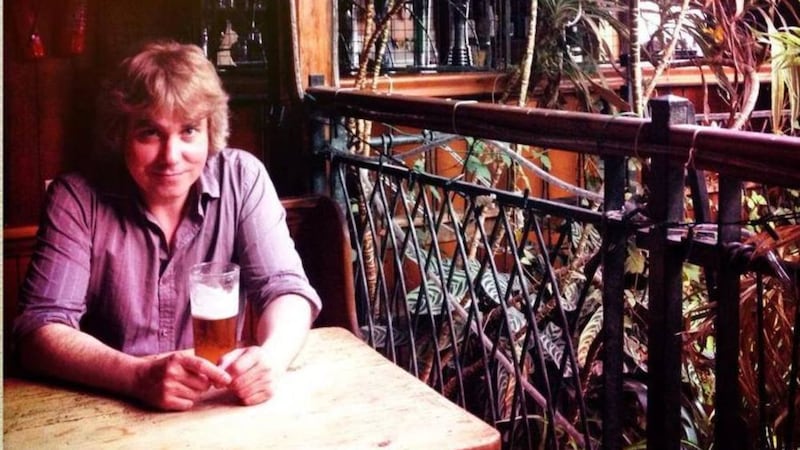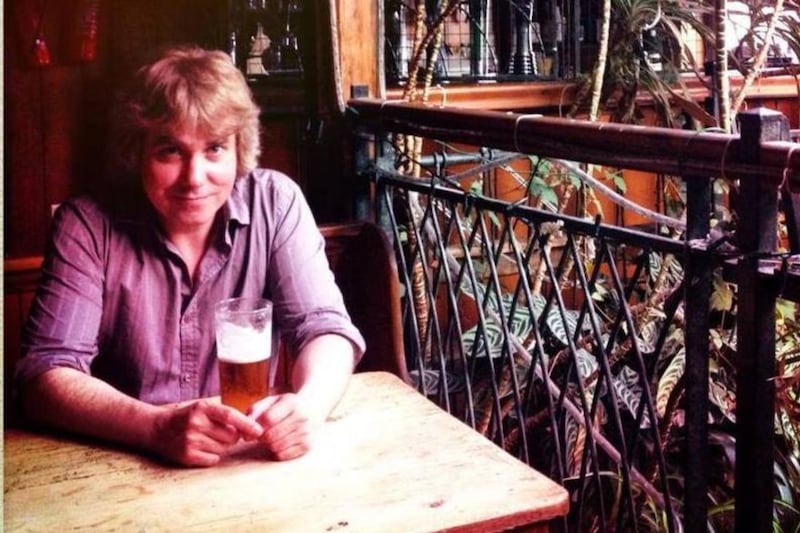THE tin whistle is a much-maligned instrument. We’ve all seen the groups of nervous-looking kids all playing the West Wind with various degrees of success. But like the kid who plays with toy cars and ends up driving Formula One, the road from the whistle can lead to the pinnacle of musical creativity and performance.
It’s a road taken by John McSherry and his sisters Tíona and Joanne and brother Paul. They started off on the penny whistle as kids at home before each took up other instruments and through natural talent and hard gigging ended up played stunning music during the Troubles as the McSherrys before Paul Dorris joined and the family band became Tamalin,
But it is John who has made a significant musical contribution to the world of traditional music through his pipe-playing both as a solo artist and in various top-of-the range bands such as Lúnasa and Coolfin, At First Light and more recently, with Ulaid.
So what has made the Belfastman such a great piper?
For Donal Lunny, it’s John’s ability to improvise which sets him apart from many other musicians who will only play what is in front of them. As well as that John can play a mixture of different styles, given that his two heroes are completely different pipers.
“I’ve always loved listening to Liam O’Flynn and to Paddy Keenan,” John tells me over a cup of tea in this north Belfast home. “Liam has what I would call ‘a gentleman’s style’. It’s very contained and beautifully executed, almost like chamber music.
“Paddy Keenan, on the other hand, has a wild style and that flair and that spontaneity means he plays with a much more open style than Liam O’Flynn’s and it’s intoxicating at times.”
However, even back in the Tamalin days, John and the other McSherrys never wanted to be a trad tribute band, mimicking Planxty and the Bothy Band.
“In the early days, a lot of the songs we did were already well-known but we would always be saying ‘Well, let’s try this’ or ‘Let’s play it this way’ and out of that we developed our own different sound. We were all into Led Zeppelin and Nick Drake and that became part of the evolution of our style,” John explains
That versatility was probably what decided Donal Lunny to invite John to play on Gary Kemp’s solo album, Little Bruises.
“Two weeks after Donal called I went down to Dublin – and was put on the spot there and then,” he says. “Donal said ‘Do you see that space in the song? We want you to fill it with a solo on the pipes.’ I’d listened to the track a few times so I knew what I wanted to do with it so I played and Gary and Donal and everybody else was very pleased with it."
After that, McSherry got more and more calls from people to play on albums by people as varied as Nancy Griffith and even Rod Stewart.
John has just released a new album, Seven Suns, a follow-up to his stunning solo debut, Soma. The latest offering is more of a concept album which looks back to our ancient roots.
“I’ve always been fascinated by the ancient monuments of Ireland, the likes of Newgrange and Loughcrew and Carrowmore,” he explains. “I often thought what went on this country when you think that Newgrange was built before the Great Pyramids in Egypt which are the oldest of the Seven Wonders of the Ancient World. Newgrange beats them by about 700 years.
“We know so little about the genius of the people who lived on this island in bygone millennia, what thoughts they had, what language they spoke, how they had fun, but I’m sure we’ll find out more as science comes up with more discoveries about our ancient past.
“As I’ve said, I’ve always been fascinated by the ancient monuments of Ireland and the tunes on the album are inspired by them. I've always wanted to put into music how I felt about these magical, mystical but very real places.”
For John, these sites are very spiritual and when he would sit down and play the pipes, a hook or a phrase would present itself and then he would let it grow and develop. Sometimes he would come up with something that didn’t work at all and other times it would work in the blink of an eye.
The finished album of course doesn’t even dip its toe into the faux-Celtic mysticism that is a blight on the aural landscape (my words, by the way). Seven Suns is a joy of styles and rhythms with McSherry joined by Seán Óg Graham – in whose studio it was recorded – Niamh Dunne and Mike McGoldrick.
“I had a fairly complete idea of what I wanted and we’d all play the tunes together but then things were nearly bedded in Sean Óg would offer ideas that I would never have thought of, so that lends another dimension to the album, I think,” says John.
The title refers to one of the most beautiful Neolithic carvings known to exist in Ireland, an astronomical stone at Dowth.
According to Mythical Ireland, the stone “contains what appear to be suns, or stars, with rays coming out from the centre, and with the whole surrounded by a circle. There are seven of these suns in total, six of which are contained within circles.”
:: John McSherry is launching Seven Suns next Saturday, November 12, at the Duncairn Arts and Cultural Centre in north Belfast. Joining him will be Donal Lunny, Michael McGoldrick, Tony Byrne and Dónal O'Connor.




